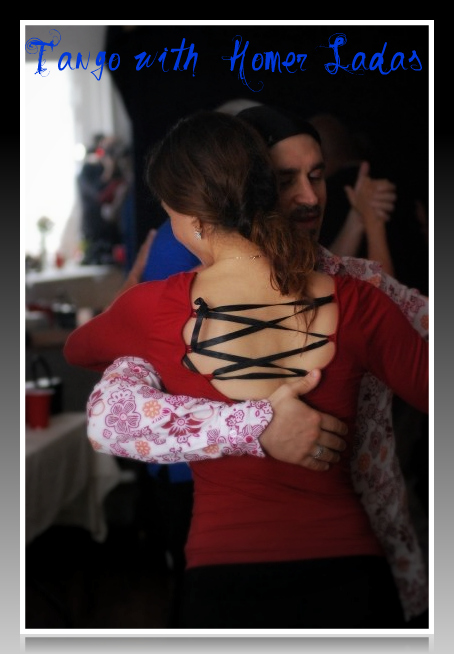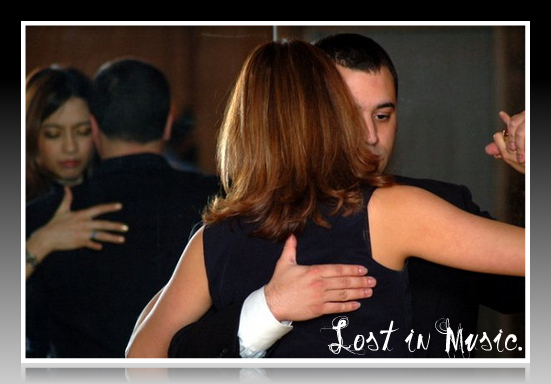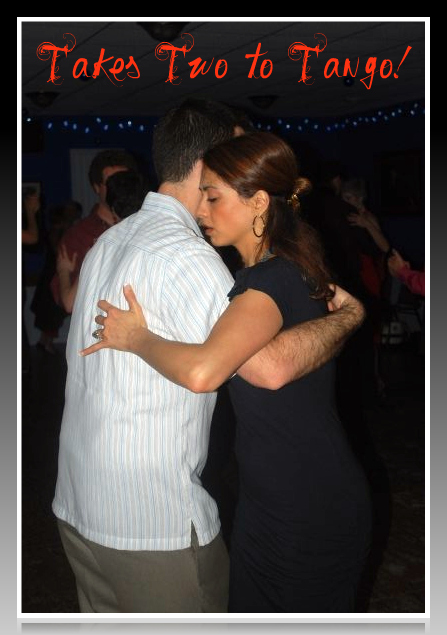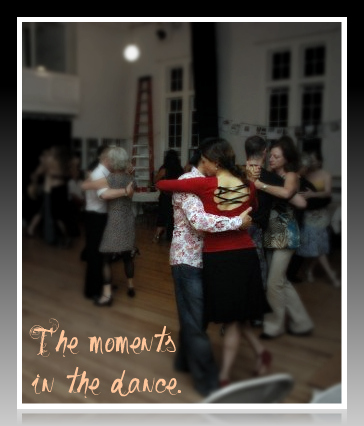 My greatest mistake wasn’t to start tango late in life, that is a mere regret, or to not tango seriously enough, I couldn’t as it was making me so happy with so little, or to not tango frequently enough, as life happens and it needs your attention. My greatest mistake was to temporarily give up tango, and sadly believe that I could live a prolific life without tango in my life. It took over a year to realize the mistake, and pay for it dearly by falling out of my tight-knit tango community and becoming rusty on those great skills I had honed. From it all, were born unforgettable lessons, and alas, bitterly sore that I were to take a break from tango, I am now back to stay for good – you can only lose a good thing once, never twice – and finally share on prolific living my fierce love of Argentine tango.
My greatest mistake wasn’t to start tango late in life, that is a mere regret, or to not tango seriously enough, I couldn’t as it was making me so happy with so little, or to not tango frequently enough, as life happens and it needs your attention. My greatest mistake was to temporarily give up tango, and sadly believe that I could live a prolific life without tango in my life. It took over a year to realize the mistake, and pay for it dearly by falling out of my tight-knit tango community and becoming rusty on those great skills I had honed. From it all, were born unforgettable lessons, and alas, bitterly sore that I were to take a break from tango, I am now back to stay for good – you can only lose a good thing once, never twice – and finally share on prolific living my fierce love of Argentine tango.
Debunking the Assumptions:
- Argentine tango is not remotely similar in any way shape or form to Dancing with the Stars, the ludicrous TV show that gives dance a bad reputation.
- Argentine tango is not ballroom tango, not even remotely.
- Argentine tango is not about flashy stage performances, fancy moves, or either partner biting down on the thorns of a long-stemmed red rose while approaching one another.
- Argentine tango is not a dance you can master in a day, a week, a month or even years.
- Argentine tango is not a venue for dating or in crude terms, a meat market.
- Argentine tango is not a series of memorized steps or patterns.
- Argentine tango does not require that you come with a tango partner and dance only with them.
Describing Argentine tango in words is like summarizing the masterpiece of Wuthering Heights in cliff notes. It will only be inadequate and substandard at best when compared to the real experience. Yet I will strive to paint a picture for you with words surrounding the magic of Argentine tango and the essence of its beauty and eternity as a social dance.

Argentine tango originates in Buenos Aires, a city I finally visited and returned to write about. Argentine tango embodies beauty, class, sensuality, subtlety, grace, fluidity, hidden challenges transformed into easy movements, and a spell-binding connection between two people who may not even have met until they set foot on that dance floor.
It takes a minute to fall in love with tango and a lifetime to master it. It is elusive and addictive. It is obsessive and blissful. It can take you through a rainbow of emotions in a single song. It is never the same exact dance, so endless are the possibilities with tango steps. Only after you first learn the embrace, and take your first few steps on the dance floor to Carlos Di Sarli‘s Comme Il Faut or Germaine, two traditional classics played in fundamental tango classes, will you experience the grip tango can have on your heart and soul.

It is impossible to count all the ways I love tango, yet one of the most logical reasons is that there are no memorized steps. This dance is entirely improvised each time, forever recreated by the leader and the follower who dance to the rhythm of their own hearts and desires at that moment in time. In classes, you learn the tools you need to enable you for achieving that. You do not learn patterns, you learn technique. The Argentine tango dancers are artists, creating drawings on the dance floor, never two can be the same. It is in this anticipation of possibilities, as you first stand up and embrace your partner, that you will come to meet and love your exhilaration for the dance.
There are many different types of social gatherings to learn, practice and enjoy the tango. The first is instructor led classes where you can almost always attend without a partner, unless otherwise required. The pairing of couples followed by regular partner rotations is the usual class style. Sometimes, the classes are referred to as tango workshops, where more proficient dancers, as a couple or individual, are invited to a location to teach. It is very common to have tango festivals where starting on Thursday or Friday and through the weekend, a series of classes are held during the days followed by evening events. The classes are usually followed by a practica, which is a very casual social setting in which to practice what you learn. Partners can correct what they have learned, stop and ask questions to the teacher if supervised, and dress very casually, including dance sneakers. The milonga is the more formal evening event, which is all about social dancing, friends and fun, and good times. It is never appropriate in a milonga to practice steps or correct your partner’s step. It is a time to bask in the glory of tango and get lost in the music!
If you are new to Argentine tango, I want to leave you with a few tango etiquette nuggets of information before wrapping up the post. While some of the etiquette may sound stoic and sexist, it is neither of those in my opinion and you can certainly break the rules if you so desire, but because those are the socially accepted forms of etiquette, I highlight them for you as such.
Tango Etiquette Highlights:
- In the tango, the man leads and the woman follows in the dance. While the woman can be an active or passive follower, the general lead and direction is originated by the leader.
- The men ask the women to dance. It is the expected form. If this is not sexist, I do not know what is but alas it is the beauty of tradition and sometimes we may want to preserve it. I have certainly asked many men to dance or perhaps it was a mutual agreement after a short chat. However, in general in a social setting, the man will make eye contact or come over and ask for a dance.
- As a follower, if you turn down a leader because you are sitting out a tanda, it is best not to dance with anyone else during that tanda. There is no obligation to go back to that leader to ask them for a next tanda, especially if you turned them down for other reasons.
- The partners dance together at least to one tanda, which is a set of 3 or 4 songs followed by a curtina. There are 3 types of dances in Argentine tango: the Vals, the Tango, and the Milonga. In general, the tango is either 3 or 4 songs, the vals is 3 and the milonga is 3, followed by the curtina. It is entirely possible that the partners decide to dance more tandas, but very unlikely that they will stop after one song and before the end of the first tanda.
- It is expected to follow the correct flow of traffic on the dance floor, and this is called the line of dance. This is a circle of dance formed very naturally by the dancers, and followed in counter-clockwise direction. Dancing in the very middle of the circle is inappropriate. Not following the line of dance is extremely inappropriate and can cause bumps to other dancers.
- Last song of the night is almost always La Cumparsita if the DJ really knows his or her music.

Photo credits: All taken by dear friend, tanguero and aesthetician, Katia Singletary, except second one taken by Michael Mathis. Graphic design on photos by Prolific Living using Picnik.
 I am Farnoosh, the founder of Prolific Living. So glad you are here. My mission is to empower you to unblock your creative genius to live your dream life.
I am Farnoosh, the founder of Prolific Living. So glad you are here. My mission is to empower you to unblock your creative genius to live your dream life.